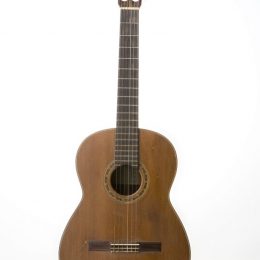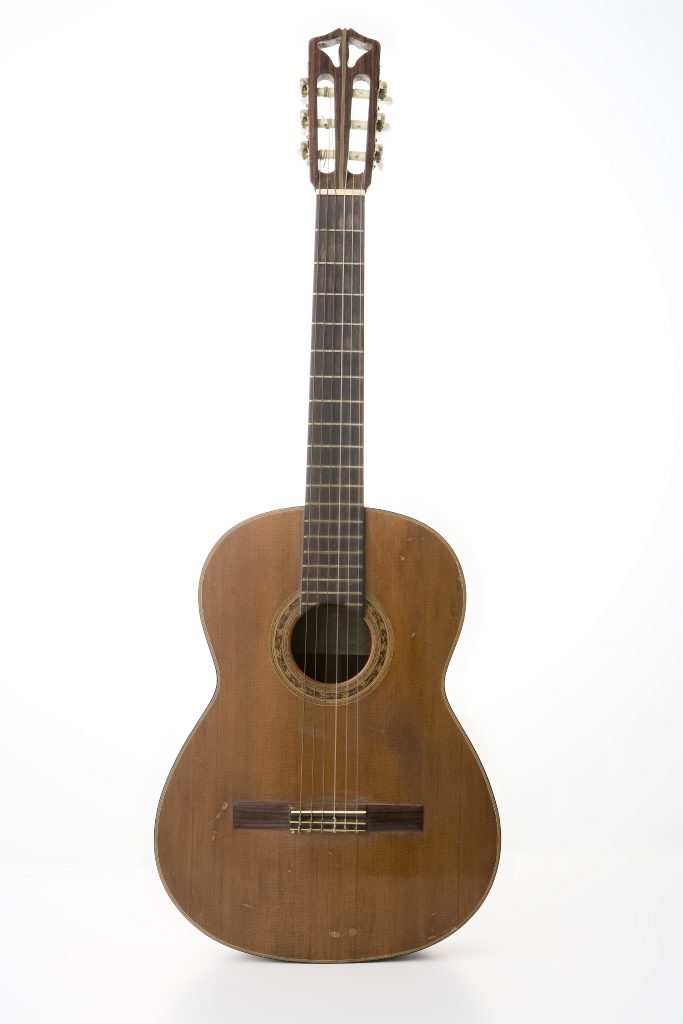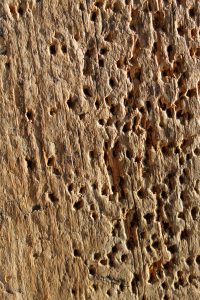WOODWORM IN A GUITAR


CAN YOU SPOT WOODWORM IN A GUITAR?
It has been known for guitar players to complain about a guitar being too heavy to use. However, that does not mean the solution is to allow woodworm to devour their way through the guitar, making it lighter to use. Woodworm is the generic term for the larvae stage of wood boring beetles. Woodworm generally emerge between April and October so it’s important for guitarists to remain alert to the possible presence of these wood boring creatures in their guitars
After mating, the beetle will look for somewhere to lay its eggs. When the eggs hatch, the larvae will burrow their way into the guitar and eat their way through the wood for anywhere up to five years. When ready to begin mating, the woodworm will eat their way out of the wood and begin the process all over again.
Any musical instrument made of wood is vulnerable to woodworm so it is essential that all musicians are able to spot the signs of woodworm and to treat the infestation before extensive damage can be done to the guitar.
SIGNS TO LOOK OUT FOR
Dead or Alive Beetles
The greatest cause for concern that the guitar is infested with woodworm is noticing beetles, dead or alive in close proximity to the guitar or emerging from small burrow holes in the guitar. It is the summer months when beetles generally emerge from the exit holes so this is certainly a sign of woodworm that you shouldn’t ignore..
Guitarists in the U.K should be on the look out for the “Common Furniture Beetle”. These beetles are extremely common in the U.K These beetles are often found dead near the infested wood. This due to the fact that the “Common Furniture Beetle” is prone to die shortly after mating, These beetles are small and brown in colour.
Woodworm Exit Holes and Tunnels

If a guitar that has been infested with woodworm in the past. There may be evidence of small exit holes in the wood, similar to holes found in a dart board. These holes are formed when the beetles have burrowed out of the wood in search of a mate. It is possible that the infestation is no longer active as these burrow holes only show where the woodworm have burrowed out of the guitar. There may or may not still be woodworm inside the guitar and this can not be determined by exit holes alone.
Raised “tunnels” within the wood is also a common sign along with exit holes. These tunnels indicates the route taken by larvae beetle as it devours its way through the wood.
Fine Powdery Dust
Finding fine powdery dust along the wood is a great indication that the woodworm infestation is still active. The powdery dust is called frass. This is the faeces left behind by larvae beetles. It is common to find frass near the burrow holes. The frass appears quite similar to moist sawdust, and is a great indication that the guitar is indeed infested with woodworm.
Crumbly Edges
The infestation if left untreated in the guitar, will allow the wood boring beetles to multiply. This means that over time, the amount of burrow holes in the guitar will increase and this will cause the edge of the wood to appear crumbly as a result. This is caused by wear and tear from the numerous exit holes near the edge of the guitar. Crumbly edges in the wood should not go ignored. Crumbly edges suggests the infestation has been active for a considerable amount of time. This must be immediately treated to avoid further damage to the guitar.
MY GUITAR IS INFESTED WITH WOODWORM
The infestation in your guitar may not be a cause for concern. If it is treated in time, but it is important to determine the extent of the damage that has been caused. Any signs of a woodworm infestation in your guitar should not be ignored. It is strongly advisable to have the guitar treated and to determine if the woodworm have spread to other areas in your home.
By Jake Ryan of Wise Property Care



